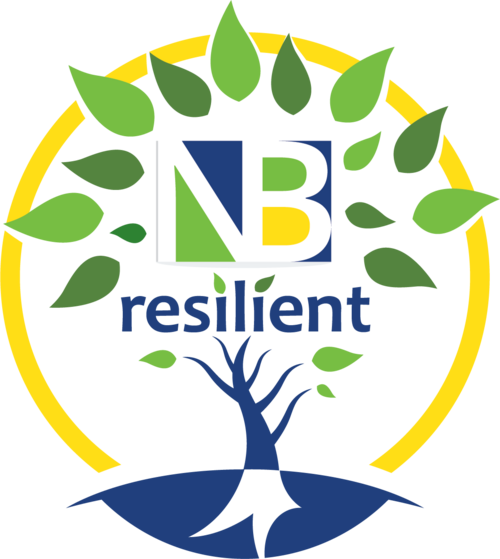Transportation & Land Use
NB Resilient Goals
A connected and well-designed transportation and land use network helps us prepare for and reduce the intensity of climate change. To reach that point, NB Resilient has laid out four goals:
- Improve, enhance, and connect the city’s multimodal transportation opportunities.
- Increase the use of pedestrian, bicycle, and transit as mode choice for local mobility.
- Update zoning and building regulations to support climate readiness for existing and new developments.
- Provide safe and affordable housing for all residents throughout the city that reflect the historical and cultural character of each area.
To learn more, read our Transportation & Land Use Fact Sheet and our Housing Plan.
Project Update
Route I-195 to Route 18 Interchange Rehabilitation Project
The goal of this project is to address poor conditions on the aged structure and improve safety throughout the I-195/Route 18 interchange. The interchange was constructed in 1965 and is in need of rehabilitation and replacement to continue to carry traffic safely.
The scope of this project entails:
- Replacing the I-195 viaduct bridge structure from County Street until just beyond the Route 18‐ Exit 15 /Acushnet Avenue Interchange
- Replacing deficient bridge piers and abutments
- Replacing ramp bridges
- Widening merge lanes and lengthening on- and off-ramps
- Repairing local streets and adjacent sidewalks impacted by construction
- Repairing the parking lot below the structure
- Constructing new stormwater drainage system for DOT infrastructure
For more information and project updates, check out MassDOT's project webpage and the public presentation from October 2023.
Green Buildings
Sustainable Development
Our built environment has a great impact on the amount of energy the City uses. NB Resilient seeks to promote sustainable development and redevelopment to ensure energy efficiency and green construction practices in our buildings. This action will examine current zoning and building codes and find opportunities to promote sustainable land development and the incorporation of additional resilience measures.
Impervious Surfaces
Impervious Surfaces in New Bedford
Impervious surfaces refer to structures such as roads, sidewalks, driveways, and parking lots that are made from impenetrable materials like asphalt and concrete. These surfaces restrict groundwater recharge and worsen flooding while increasing the risk of harmful runoff entering our waterways. As of 2014, 33.9% of New Bedford was covered in impervious surfaces.
This map shows the percent of impervious area within 1 square kilometer. The higher percentage of impervious surface in the city center contributes to the urban heat island effect. Reducing the amount of impervious surface will help residents stay cool during high heat days.
Energy-Efficient Transportation
GHG Emissions from Transportation
Transportation makes nearly a third of New Bedford’s greenhouse gas emissions. Passenger vehicles account for the largest portion of the city’s transportation emissions followed by light-duty trucks.
Energy-Efficient Transportation
Municipal Emissions
New Bedford is committed to reduce the greenhouse gas emissions coming from the municipal transportation sector by 50% by 2030. Currently, 12% of municipal emissions come from the transportation sector (Source: 2019 data presented in the 2023 GHG Inventory Update). The City is working to green the municipal fleet by exploring clean fuel, transitioning to electric vehicles, and supporting anti-idling laws. As of 2018, there were 23 electric vehicles in the municipal fleet.
Tax Credits and Rebates
Electric Vehicles
The Inflation Reduction Act will help more families never pay at the pump again, with tax credits up to $7,500 for new electric vehicles and $4,000 for used electric vehicles – saving families an average of $950 a year on fuel costs. Learn which vehicles qualify for the 2023 electric vehicle tax credit in 2023.
For more information on the Inflation Reduction Act's rebates regarding Electric Vehicles, see the EV section of the Clean Energy for All page on whitehouse.gov.
Incentive Type: Tax Credit
Incentive Amount: Up to $7,500 for eligible buyers of qualified clean vehicles.
How to Access: Submit IRS Form 8936 when filing your taxes if you meet the requirements detailed on IRS.gov.
Energy-Efficient Transportation
Where Do You Want to See EV Chargers in New Bedford?
We are partnering with the Massachusetts Clean Energy Center (MassCEC) to explore on-street electric vehicle charging solutions for residents without access to off-street parking. This initiative supports our commitment to clean transportation and a greener future.
Tell us what you think by taking a quick survey here.
- Rate and propose locations
- Share your preferences and input
Your feedback is crucial to ensure that charging infrastructure is accessible, equitable, and convenient for all residents and businesses.
Multimodal Transportation
The Blue Lane
The Blue Lane is designed to showcase New Bedford’s commitment to bicycle planning for public health and outdoor recreation. The Blue Lane is a cohesive designation for the city’s waterfront path from the CoveWalk and HarborWalk along the South End peninsula to the planned RiverWalk on the banks of the Acushnet River in the North End. Spanning the shoreline of the city as a signal to residents and tourists of a contiguous set of recreational pathways that allows travel along the entire New Bedford waterfront, connecting the attractions not only to local neighborhoods, but also to one another. The improvements along the waterfront allow visitors to New Bedford’s spectacular water views as never before.
Actions You Can Take
Reduce Your Impact
Reducing greenhouse gas emissions is something everyone can do! Here are some ideas.

